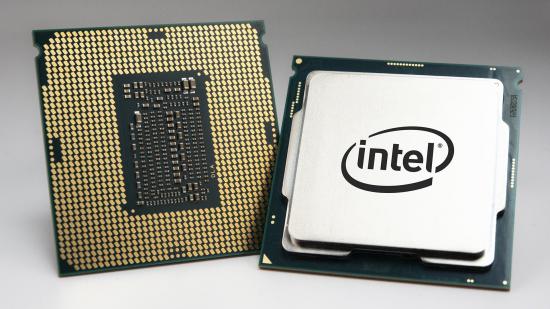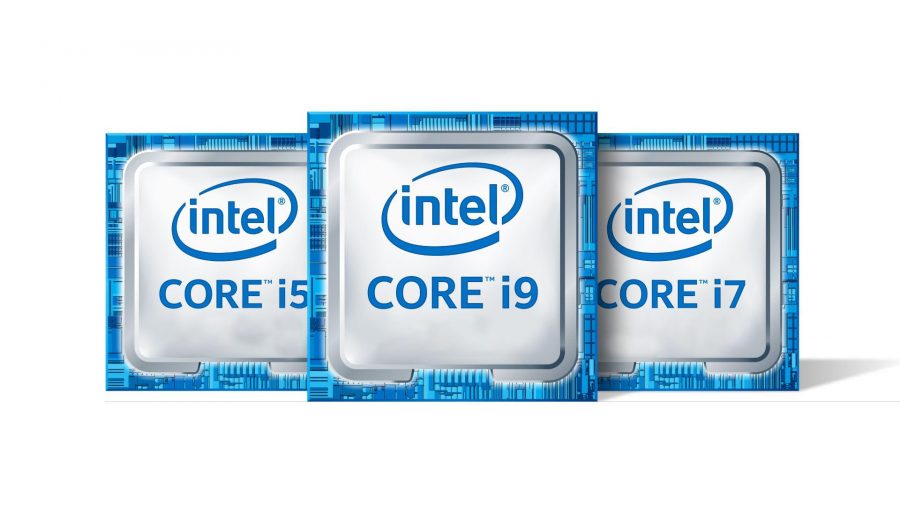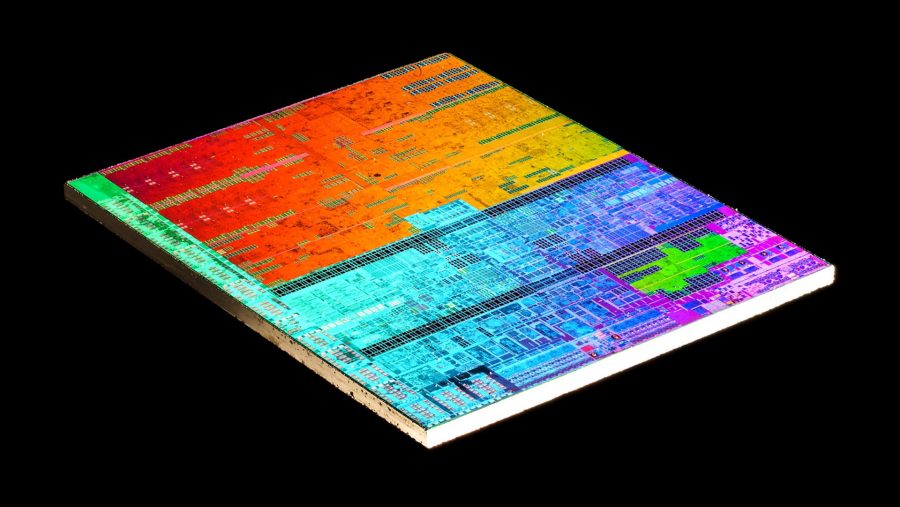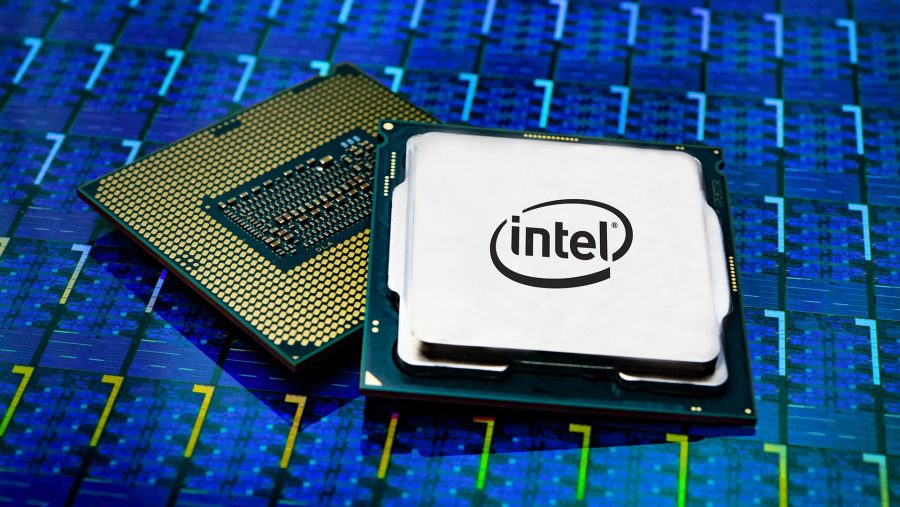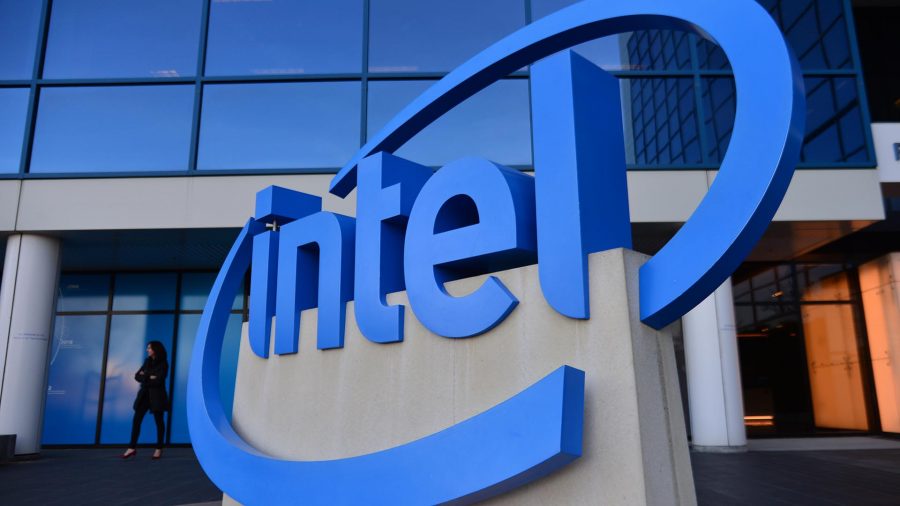Intel Comet Lake CPUs will take over the mantle from current 9th Gen Intel Core desktop CPUs. Rumoured to be released sometime over the next three to four months, these heavily optimised 14nm processors should have some serious chops. After pressure by the name of AMD, Intel has opted for Hyperthreading throughout its Comet Lake lineup, too.
The Skylake microarchitecture has taken many forms since it was first introduced. The biggest changes to the formula occurred following the launch of AMD Ryzen, which has been putting pressure on Intel to roll out greater core counts across its client i3, i5, and i7 lineup. And with AMD now knocking on its door with Zen 2 and the 7nm process node, the pressure is on Intel to deliver.
Intel’s response to this growing pressure is two-fold. It first branded 14nm Intel Comet Lake (and 10nm Ice Lake) processors with the 10th Gen badge on mobile. The first slim laptops under the 10th Gen umbrella are now available for purchase, too. Following that, in the coming months, it will launch Comet Lake processors in full 10-core splendour and cheap and cheerful i3 garb. We’re suspect a little more gossip on these chips come CES 2020.
Current rumours suggest 10nm will not be available en masse and in desktop form until sometime in 2020/21, which could cast a shadow over Intel’s efforts to defeat AMD’s rejuvenated CPU division.
But there’s still something to be said for Intel’s raw gaming performance, a crown it has managed to keep out of AMD’s grasp (and won’t stop shouting about). In that regard, and glossing over pricing and production, it’s all still to play for.
VITAL STATS
Intel Comet Lake release date
Current rumours suggest Comet Lake desktop chips will launch in Q2 2020, with recently leaked slides pointing at an April-June release date window. Z490 motherboards – the first Comet Lake boards – should be announced in May, and it would make sense for Comet Lake CPUs to release soon after this.
Intel Comet Lake specs
While details remain sparse, there’s only so much Intel can do with Skylake on its 14nm process. Intel’s EEC registrations confirm up to 10 cores will be available on the top i9 processors, and leaked slides suggest these will be imbued with a moderate clock speed bump, too. MSI has also now confirmed that the new Comet Lake CPU socket will be the LGA 1200, and will not be pin-compatible with existing 14nm platforms.
Intel Comet Lake performance
Single-core performance has only increased moderately with each generation since Skylake. Each one improving a wee bit on the last. Applications that favour multithreaded chops will see another significant bump to performance with the step up to a decacore chip, however.
Intel Comet Lake price
The Core i9 9900K currently retails at $488 (£480), making it one of the most expensive mainstream chips Intel has released in recent years. With AMD encroaching on Intel’s client sales, we’re hoping for a reprieve from Intel’s traditional pricing premium on top of that for another two processing cores. But that’s not guaranteed, and the most recent leaks point towards Comet Lake’s pricing being similar to Coffee Lake’s pricing, and perhaps even slightly more expensive.
WHAT IS THE INTEL COMET LAKE RELEASE DATE?
Intel Comet Lake CPUs are suspected to launch between April and June 2020, according to a recently leaked slide. This slide states that the “press news embargo” for 10th Gen Intel Core Processors will run from 13 April – 26 June, 2020. They were originally suspected to launch either in Q1 2020, or a more definite, though still vague April/May release window, depending on which leak you believed.
There have been rumours Intel delayed the release to get the power draw down on the top 10-core CPU, and now Intel board partners have apparently leaked a May announcement timeframe for the flagship Z490 motherboards. And there would be no point releasing chips until the boards are out because the new LGA 1200 chips are incompatible with existing mobos. The most recent leak fits with this announcement timeframe for the Z490 motherboards, meaning a Q2 release for Comet Lake CPUs is likely.
Also corroborating this early-2020 timeframe is the fact that Arctic Freezer coolers with LGA 1200 support are already on sale.
The company’s 7nm chips won’t head into production until Q4 2021, CEO Bob Swan has confirmed. Until all that, it’s Comet Lake or bust for Intel fans. Luckily, we’re already seeing some Comet Lake desktop processors appearing in online benchmarking databases, which we can infer means a launch sooner rather than later.
A roadmap leaked to Hong Kong-based site, XFastest (from an anonymous source and not verifiable), indicates Comet Lake S will launch ever-so-slightly before the end of 2020 alongside 400-series chipsets. However, information from HKEPC suggests Z490 chipsets and Comet Lake chips won’t launch until April, 2020.
Both Comet Lake chips and 400-series motherboards (Z490, B460, and H410) have since been confirmed by Intel and Gigabyte in EEC registrations in September. The former came in the form of SDP kits – complete with 10 cores and Gen9 graphics – which would suggest Intel was close to finalising the Comet Lake CPU for retail.
This also aligns with previous speculation based on information hidden in plain site within patches to the Linux graphics driver. Intel’s changes to the code, posted early March, reference Comet Lake directly, and the tweaks are suspected to be a timely precursor to hardware shipping before the end of the year.
The patch reads: “Comet Lake is a [sic] Intel processor containing Gen9 Intel HD Graphics. This patch adds the initial set of PCI IDs. Comet Lake comes off of Coffee Lake – adding the IDs to Coffee Lake ID list. More support and features will be in the patches that follow.”
WHAT ARE THE INTEL COMET LAKE SPECS?
Intel Comet Lake will bring 10 cores to the mainstream desktop CPU market, as confirmed in its EEC registrations. The chip itself will be built upon the now heavily-optimised 14nm process node. With Hyperthreading enabled on everything, from the top chip down to the Core i3 lineup, we’re certain we’ll be seeing a 20-thread CPU rule over Intel’s lineup in 2020.
Why 14nm in 2020? Intel has been wrestling with its 10nm process node for many years, and after significant delays – and aborted launches – 10nm is finally shipping in a handful of mobile CPUs in 2019. But even that is a rather tepid affair, and volume desktop CPUs on the 10nm process are not expected until late 2020/early 2021.
Instead, Intel is sticking to its guns: 14nm. This isn’t exactly the same process or architecture that was first introduced into the mainstream world back with Skylake. No, this has been optimised and modified into faster, more core-happy chips complete with new encoders, much needed security fixes, and feature updates.
One of the biggest changes proposed with Comet Lake would be the introduction of Hyperthreading into the mainstream i5 and i3 lineups for the first time. Also on the slate with the top two chips in the 10th Gen lineup is a new boost formula, Intel Thermal Velocity Boost, which will drive clock speeds up to 5.3GHz on the i9 10900K.
While unconfirmed, leaked slides reportedly from the horse’s mouth propose Intel’s entire 10th Gen Comet Lake lineup as below.
| CPU | Cores/Threads | Base/Single-core turbo (GHz) | Max Turbo 3.0 (GHz) | Intel Thermal Velocity (GHz) | TDP (W) | Price |
| Core i9 10900K | 10/20 | 3.7/5.1 | 5.2 | 5.3 | 125 | TBD |
| Core i9 10900 | 10/20 | 2.8/5.0 | 5.1 | 5.1 | 65 | TBD |
| Core i7 10700K | 8/16 | 3.8/5.0 | 5.1 | N/A | 125 | TBD |
| Core i7 10700 | 8/16 | 2.9/4.7 | 4.8 | N/A | 65 | TBD |
| Core i5 10600K | 6/12 | 4.1/4.8 | N/A | N/A | 125 | TBD |
| Core i5 10600 | 6/12 | 3.3/4.8 | N/A | N/A | 65 | TBD |
| Core i5 10500 | 6/12 | 3.1/4.5 | N/A | N/A | 65 | TBD |
| Core i5 10400 | 6/12 | 2.9/4.3 | N/A | N/A | 65 | TBD |
| Core i3 10320 | 4/8 | 3.8/4.6 | N/A | N/A | 65 | TBD |
| Core i3 10300 | 4/8 | 3.7/4.4 | N/A | N/A | 65 | TBD |
| Core i3 10100 | 4/8 | 3.6/4.3 | N/A | N/A | 65 | TBD |
Recent benchmark leaks, however, put the Core i7 10700K at 5.3GHz Turbo Boost.
Recently, Uniko’s Hardware (via VideoCardz) posted a picture of a Core i5 10400 package, with its frequency stated as 2.9GHz. This would corroborate with the information gleaned from previous leaks, but the picture’s credibility remains unconfirmed.
Rumours of ten-core Intel Coffee Lake processors have been circulating since the dawn of time… or at least since last November when the first mention of these chips was spotted on a tech forum. But it wasn’t until 2019 that Intel’s own Linux drivers, submitted in March, exposed various tidbits of information regarding these processors.
Four entries within the driver were particularly pertinent to Comet Lake:
- { CPUID_COMETLAKE_U_A0, “Cometlake-U A0 (6+2)” },
- { CPUID_COMETLAKE_U_K0_S0, “Cometlake-U K0/S0 (6+2)/(4+2)” },
- { CPUID_COMETLAKE_H_S_6_2_P0, “Cometlake-H/S P0 (6+2)” },
- { CPUID_COMETLAKE_H_S_10_2_P0, “Cometlake-H/S P0 (10+2)” }
The final entry is of most interest to desktop gamers. It confirms a 10+2 Comet Lake SKU, 10 processing cores and integrated Gen9, GT2 graphics. These will almost certainly retain the same ring bus interconnect of their Coffee Lake predecessors and feature an increase in L3 cache to 20MB with the top decacore chip.
However, the same slides that may tell of Comet Lake’s release window also indicate a change of socket pin configuration from LGA 1151 to LGA 1200. MSI has now seemingly confirmed this, listing support for the LGA 1200 Intel socket on its new MAG Core Liquid CPU coolers. Reportedly, 400-series motherboards are in the works across Intel’s partners, and at least 26 Comet Lake motherboards are on the way from Asus. These include Z490, H470, B460, and W480 chipsets.
There has also recently been
Intel is also reportedly expanding its TDP envelope with 10th Gen. The K-series processors (and KF-series processors, which have been rumoured to return with Comet Lake, such as the i9 10900K and i7 10700K, are reportedly fit with a 125W TDP. (Leaks also suggest that KF-series processors will be returning with Comet Lake, and these too will have 125W TDP.)
Oh, and reports of PCIe 4.0 support being attempted on Intel Comet Lake may have been bogus altogether. Looks like your best bet for greater bandwidth remains AMD Ryzen.
INTEL COMET LAKE PERFORMANCE
With every revision of the Skylake architecture – be that 14nm, 14nm+, 14nm++, or 14nm+++++ – Intel has managed to squeeze a little more performance out of the silicon. But while these improvements in clock speed have only been modest, the last couple of generations have also seen an increase in core count.
The latest leaked slides (via HardwareLuxx) suggest the two-core bump could account for some 30% performance increase in some heavily multithreaded workloads. In single-threaded applications, namely games, that boon will not be anywhere near as pronounced. Rather, we suspect single digit improvement.
We can also expect greater performance in multithreaded workloads on Core i5 and i3 processors with the addition of Hyperthreading on these mainstream and entry-level chips. But once again single-threaded performance will likely see marginal improvement over Coffee Lake.
The graphics card remains the key component for us gamers, with the CPU an important, yet secondary, component in our quest for fps. Rather, the multi-core prowess of Comet Lake will come in handy if you’re an extreme multitasker or editor, such as a streamer or content creator, who is going to be utilising the CPU for more than just plain ol’ gaming at any one time.
It won’t be easy for Intel, however, and Comet Lake has its work cut out for it. While the i9 9900K managed to safely trounce AMD’s Ryzen 7 2700X, albeit for a lot more cash, Comet Lake will be pit against AMD’s Ryzen 3000 processors led by the 12-core Ryzen 9 3900X and the 16-core Ryzen 9 3950X.
INTEL COMET LAKE PRICE
Intel is walking a pricing tightrope in the client market, not one bit helped by its current struggle to produce the chips it requires to meet its clients’ needs.
Intel is yet to deviate from its traditional pricing structure, charging upward of $480 for the eight-core i9 9900K. But that rigid structure is under fire from AMD’s Zen 2 architecture, with the Ryzen 7 3700X offering an equitable quantity of cores for $329.
That puts it in a sticky situation with Comet Lake. The 10-core i9 10900K chip could necessitate a price tag of brobdingnagian proportions.
Intel has shown some want to deviate from its long-standing pricing structure, however. At least in the HEDT market. Intel’s latest Core X-series processors, Cascade Lake X, saw prices slashed by nearly half to compete with AMD’s Threadripper processors.
While there’s still hope for a 10th Gen price drop, an IT retailer has been spotted listing Intel Core Comet Lake processor prices at roughly the same price as their Coffee Lake counterparts, if not a little higher. TechPowerUp also recently reported that a Dutch website has listed the prices for the entire Comet Lake Core CPU range. Corroborating the previous leak, these Comet Lake CPU prices (listed in Euros), are the same if not higher than comparable Coffe Lake CPU MSRPs. For example:
| CPU | Price (approx.) |
| Intel Core i5 9400 | 237€ |
| Intel Core i5 10400 | *230€ |
| Intel Core i5 9600K | 257€ |
| Intel Core i5 10600K | *316€ |
| Intel Core i7 9700K | 404€ |
| Intel Core i7 10700K | *467€ |
| Intel Core i9 9900K | 550€ |
| Intel Core i9 10900K | *600€ |
*These prices are still unconfirmed
While this isn’t bad in a vacuum, with AMD Zen 3 CPUs being likely to offer great price to performance, Intel might have its work cut out for it.
